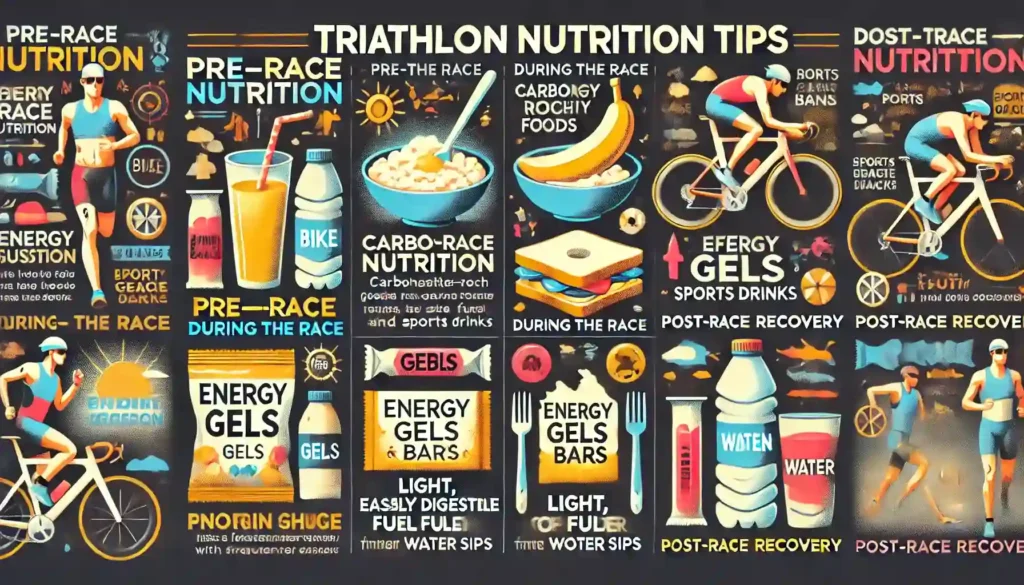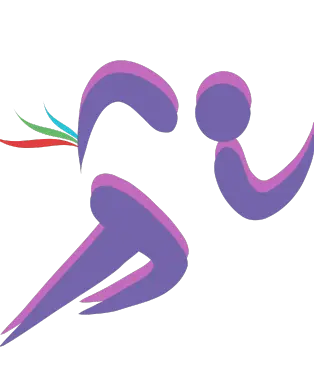Triathlon is an intimidating, exciting multi-sport that will test your mental and physical toughness as it combines three completely different disciplines- swimming, cycling, and running. Meanwhile, Triathlon is becoming increasingly popular across the globe, and more and more people are wondering what it entails and how to train for such a demanding race. This article will serve as a thorough guide to Triathlon for experienced athletes who want to make their way into this sport and newbies interested in taking a shot!
Table of Contents:
- What is a Triathlon?
- A Brief History of Triathlon
- Three Disciplines to Focus on Racing Triathlon
- Triathlon Race Distances
- Transition Zones Explained
- Gear Checklist for Triathletes
- How to Train for a Triathlon
- First, the Beginner Triathlon Training Plan
- Triathlon Nutrition Tips
- Health Benefits of Triathlon
- Frequently Asked Questions
What is a Triathlon?
A triathlon, a multi-stage race that includes swimming, cycling, and running, follows this sequence without stopping. That specific order of the leg is completed by giving way to one another as efficiently and effectively through each part`]
Triathlons are notorious for being a mental and physical grind. Each discipline calls for a different set of skills, bringing variety to the workouts involved and making Triathlon a great form of cross-training. Unlike individual discipline races (e.g. marathons, cycling events), Triathlon has garnered a reputation for being demanding due to athletes having not only swim but also bike and run on the day of competition.
A Brief History of Triathlon
Triathlon owes its roots to the 1970s Southern California website. In 1974, a group of three athletes from San Diego determined they could create an event that combined the best parts of their favorite endurance sports…and so it was: The first in history! The inaugural triathlons were humble and casual events, yet health-minded individuals and other competitive athletes quickly adopted the format.
One of the greatest moments in sports history occurred when the Ironman Triathlon was built in Kona, Hawaii, in 1978. John Collins, a U.S. Navy Commander, introduced the race (a 2.4-mile swim, 112-mile bike ride, and marathon run). The grueling conditions and extreme distance excited the public, making Ironman one of history’s most cherished endurance races.
In 2000, the Triathlon finally became an official Olympic sport, debuting at the Sydney Summer Olympics. The sport’s profile was raised when Triathlon joined the Olympic Games.
Triathlon Basics: Three Sports in One
There are three main stages which make up a triathlon:
Swimming
The Triathlon consists of three disciplines, the first of which is swimming. Traditionally, it is done in open water (lake, river, or ocean). The swim portion is the shortest of all three disciplines and can occur in a pool if it’s a short distance. Open-water swims have the added difficulty of no lane lines, currents, or other swimmers.
Endurance is essential in Triathlon. You need to breathe, and it’s helpful if you can see (look ahead without stopping in a shop window) when spotting. However, this technique only works in humid, above-free diving; you must wear wetsuits. These give buoyancy due to their thickness and thermal protection when the water is too excellent.
Cycling
After the swim, athletes don bicycle helmets and take to their bikes. This stretch is the farthest at a time and generally sets when you do it for whatever remains of your race. Sports athletes practically exclusively drive road bicycles or time trial-specific bikes to reduce drag and enhance pace.
The bike needs a different set of skills which are endurance, pacing and actually how to handle the damn thing. Sometimes, drafting (riding in the slipstream of a cyclist ahead) is allowed, but other times, there is no assistance as far as cycling, so you need to ensure it.
Running
The next leg of the Triathlon is a run after completing an endurance-taxing swim and bike ride. The run is the part of an Ironman where fatigue comes into play (yes, I know!), and athletes must tap into that all-important mental strength to keep running.
The key to an excellent triathlon run is good pacing, hydration and energy management. This is also where many athletes experience what we call “brick legs,” when your legs feel very heavy from the cycling, and you may not (emphasis on ‘may’) be able to get excellent height with each step.
Triathlon Race Distances
The variety of race distances is one of the primary drawing cards for Triathlon, and it ensures that athletes at any experience level have a chance to find their ideal distance. Top most typical triathlon races:-
Sprint Triathlon
- Swim: 750 meters
- Bike: 20 kilometers
- Run: 5 kilometers
Sprint triathlons are the most accessible. They have manageable individual distances and take less time than more extended events. The races usually last 1 to 2 hours.
Olympic Triathlon
- Swim: 1.5 kilometres
- Bike: 40 kilometers
- Run: 10 kilometers
The Olympic Triathlon is an endurance sport that demands a high level of fitness and stamina, with the standard distance for this event being 1.5K (0.93 mi), swimming further 40 Km(24.8 miles ) cycle ride followed by racing on foot for the last leg at 10 km running! This is your next great challenge for any athlete who wants to take it beyond a sprint.
Half Ironman (70.3)
- Swim: 1.9 kilometres
- Bike: 90 kilometers
- Run: 21.1 kilometers
A Half Ironman, or Ironman 70.3, is a significant step up from the Olympic distance and a popular choice for seasoned triathletes seeking a more intense challenge.
Ironman Triathlon
- Swim: 3.86 kilometres
- Bike: 180.25 kilometres
- Run: 42.2 kilometers
The full Ironman represents the pinnacle of endurance sports. The Ironman World Championship is an end-of-season race, and most athletes will dedicate months or even years to training for this one event. Depending on the individual’s fitness, it takes anywhere from 8 to 17 hours.
Here is a table that summarizes the distances for different types of triathlons:
| Triathlon Type | Swim (km) | Bike (km) | Run (km) |
|---|---|---|---|
| Sprint Triathlon | 0.75 | 20 | 5 |
| Olympic Triathlon | 1.5 | 40 | 10 |
| Half Ironman (70.3) | 1.9 | 90 | 21.1 |
| Ironman Triathlon | 3.86 | 180.25 | 42.2 |
This table clearly compares the swim, bike, and run distances for each triathlon type.

Transition Zones Explained
Another aspect unique to Triathlon is the transition zones. The transition is simply the time to move from swimming (the swim-to-bike) or biking into running (bike-to-run). These changes are classed as T1 (swim-to-bike) and T2 (bike-to-run).
Smooth transitions are a massive part of triathlon success. Even experienced triathletes can save minutes in T1 and T2 if they can get their transitions down pat (fast equipment changes and mental prep for the next leg).
The Must-Have Equipment For Triathletes
Triathlon is a minimal equipment sport, but having the right gear can make substance performance and comfort solutions more effective.

The Triathlete Gear Checklist
- Triathlon Suit (Tri-suit) A one or two-piece that can be worn from the beginning to finish of the race.
- A wetsuit is your answer for buoyancy and warmer temperatures for those colder open-water swims.
- Swim Cap and Goggles — Essential for any swim leg.
- Bike: A road or triathlon-specific bike is critical for the biking leg.
- The helmet is required for the bike part of the race
- Clip-in Shoe Pedals for Cycling: Clip-in shoes can increase cycling efficiency.
- Running Shoes: For the final leg, you will need comfortable, well-fitting running shoes.
- Race Belt: Can do no-stitch race numbers for a faster transition to and from the bike rack.
- Another essential kit includes a water bottle/hydration pack to help you stay hydrated throughout the race.
How to Train for a Triathlon
A triathlon training plan must have three deep disciplines: strength, mobility, and recovery. A novice training plan usually lasts 12–16 weeks, depending on the race’s distance and the athlete’s fitness.

Beginner Triathlon training plan
Basic 12-week sprint triathlon training plan for beginners
- Weeks 1-4: Swim, cycle, run — aim to swim/bike/run easy for approximately 20–30min (2–3x per week). Added LIGHT strength training.
- Weeks 5–8: Push for more distance and endurance (45 to 60 minutes). Once per week, do one “brick” workout (a bike ride followed by a run) to get used to transitioning.
- Take weeks 9-12 to zero in on race-specific training—open-water swims, extended rides, and plenty of practice with transitions. Finally, in the last two weeks, taper your workouts so you feel fresh on race day.

Triathlon Nutrition Tips
Nutrition is a third pillar in the success of your triathlon training and race-day performance. Some essential triathlon nutrition tips include :
Optimum Fueled: Carbohydrate Loading In the days before your marathon, you should begin to consume complex carbohydrates so your body muscles are fully fueled.
Water: Ensure you hydrate well throughout your training and race day. Otherwise, you may find that during your long cycle or run.
Race Nutrition: This will vary depending on your training, but I generally stick with energy gels or bars (cliff shots) and electrolyte drinks/drinks to keep your blood sugar level. Make sure whatever you plan to use come race day 1) doesn’t upset our git and, in some cases, helps move things along before the swim by having a little extra fibre; practice during longer races like Half Ironman/ironman practices eating small portions of said items this way when race time comes up only if needed food becomes easy comfort is home fuel used!
Health Benefits of Triathlon
Anyone participating in triathlons will tell you how insanely good they are for your physical and mental health. 5 Impressive Health Benefits of Lemon Water — Some of the top health benefits include :
Excellent Cardiovascular Fitness: Swimming, cycling, and running are ideal for aerobic conditioning, which optimizes the function of various parts, such as the heart and lungs.
Muscle Strength and Endurance: Training in three sports builds strength, endurance, and flexibility.
Weight Loss: Training for a triathlon is an effective way of burning calories and getting rid of those extra unwanted pounds.
It demands mental toughness to endure an activity like a triathlon, which develops the overall health of the mind.
Cross-training—when athletes train for multiple sports at once rather than solely for an individual sport like running, cycling, or swimming—helps reduce the risk of overuse injuries.
Questions & Answers!
Triathlon and Duathlon; What’s the difference?
TRIATHLON combines swimming, cycling and running. DUATHLON consists of only two disciplines, which are most often run-bike-run formats.
How Many Weekends Does It Take to Become a Triathlete?
A sprint or Olympic Triathlon should require at least a 12—to 16-week training plan for intermediate and advanced levels. Seasoned athletes preparing for an Ironman distance might want or need up to 6 — 12 months.
Am I allowed to walk a portion (or all) of the run in TriathlonTriathlon?
In that first half of the sentence, you can walk as much as you can during that running part of the race. Many newbies will end up doing a walk-run on the way home.
So, how did I do when riding a triathlon bike?
Depending on the event, beginners can race on their normal road bike or even a mountain bike, though triathlon-specific bikes deliver better performance and are more advantageous for longer courses.
What is a Brick: Today, I had to do my first brick of this training cycle.
This is when I finish my brick workout, which means doing two disciplines right after each other (usually biking followed by running). They employ longer T2 (bike to run) bricks that do 30 miles on the bike with an hour off and then run around 8-10 as it helps get your legs used to running post-bike without them feeling dead on arrival.
On any other day of the year, they may be swimming for an hour, biking for five hours and following up with a 10-mile run — all before dinnertime just because «they felt like riding» or wanted to crack open their new wetsuit. These crazies cannot turn off the mental motor that drives them. What Triathlon really is, one thing I often hear from these folks (not yet myself) is how much you learn about yourself during your race. More so than life experience in everyday events! Whether you are a newbie looking to tackle your first sprint triathlon or dreaming of the Ironman finish line, becoming a triathlete is a unique and memorable journey. Now that you have grasped the gist of Triathlon, it is time to get your running shoes on and ride a bike into multi-sport racing.

